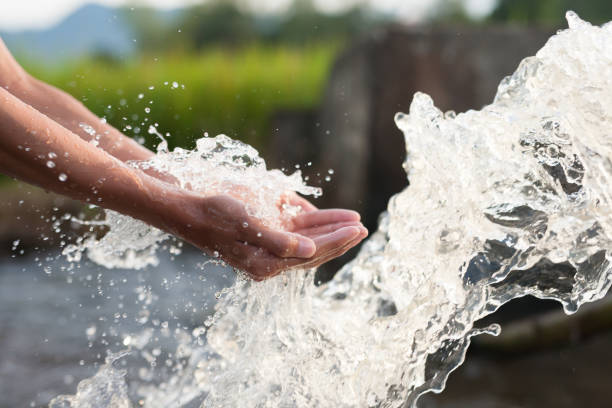by Sheyna Haisman-Holmes
Kapha dosha is composed of water and earth elements. As we approach the Spring Equinox next week, we are currently transitioning into Kapha season. The earth is saturated with water from the winter rains, where liquid, cold and heavy are present. Our bodies may have pent up toxins from the winter months of less movement and minimal sun. It is a good time to start thinking about detoxing the body and becoming lighter for spring energy. Kapha molecules stick to one another and grow, making up the body mass with qualities of heavy, dull, oily, cold, liquid, smooth, dense, soft, static, sticky, cloudy, hard and gross. There are five subdoshas of Kapha that each represents different elements and parts of the body.
The main seat of kapha dosha is in the lungs, respiratory tract and upper fundus of the stomach. This can show up as phlegm and congestion when off balance. Kapha is also represented by everything white in the body including fat, muscle, lymph, white blood cells, the brain, myelin sheath, joints, synovial fluid, etc. Kapha lubricates the spaces between the cells and prevents friction, which is very important for longevity and pain prevention. Below are the five subdoshas of Kapha:
Kledaka Kapha: Fire
–Location: stomach, GI
–Fluids: gastric secretions, hydrochloric acid, pepsin
-Digestion, absorption, digestion of proteins
-Protective lining of stomach that regenerates every 72 hours
-Maintains hydration of cells & tissues
–Disorders: ulcers, leaky gut, obesity, diabetes, high cholesterol
Avalambaka Kapha: Air
–Location: lungs, heart, respiratory tract, spine
–Fluids: pleural fluid, pericardial fluid, bronchial secretions
-Removes carbon dioxide to make way for oxygen
-Maintains muscular tone of the bronchi and keeps alveoli moist
-Supports intercostal muscles and ribs
-Effected by grief and sadness, holds emotions
-Creates confidence, courage and problem solving
–Disorders: bronchitis, asthma, pneumonia, emphysema
Bodhaka Kapha: Water
–Location: oral cavity
–Fluids: salivary secretions
-Taste, swallowing, speech
-Maintains oral temperature & water electrolyte balance
-Taste buds and the 6 tastes are perceived on different areas of the tongue
–Disorders: tonsillitis, bacterial mouth, sticky or dry mouth, too much saliva
Tarpaka Kapha: Ether
–Location: white matter of brain, myelin sheath, cerebrospinal fluid
–Fluids: myelin sheath & spinal fluid
-Subconscious thinking & emotions, memory, traumas
-Protects neuron and neural communication with the myelin sheath
-Astral body that records everything including past life experiences
–Disorders: psychological trauma & biological memories are stored in this medium, crystallized emotions causing confusion, rigidity/callousness, living in the past, stroke paralysis, Parkinson’s, brain tumors
Shleshaka Kapha: Earth
–Location: joints & ligaments
–Medium: synovial fluid, cartilage
-Supports skeletal system by lubricating joints and nourishing bones
–Disorders: degenerative & rheumatoid arthritis, cracking/popping joints, osteoarthritis, bone spurs, sciatica
We are made of water and all our bodily waters and fluids are Kapha dosha. Our bodies need lubrication to prevent injury and pain from friction that occurs while me move around this planet. Some key words here are: supporting, maintaining, protecting. It is helpful to know where in the body Kapha and its subdoshas live so we can be better aware of doshic imbalances. When we meditate and live in the present moment, we are unwinding the past & old traumas stored in Kapha. Sometimes Pitta can burn aspects of Kapha and allow Vata to enter. We want to remain in proper balance with Vata and Pitta to protect Kapha and all its supportive fluids.
May our watery bodies be nourished, clean and strong! 🙂
3/15/23
